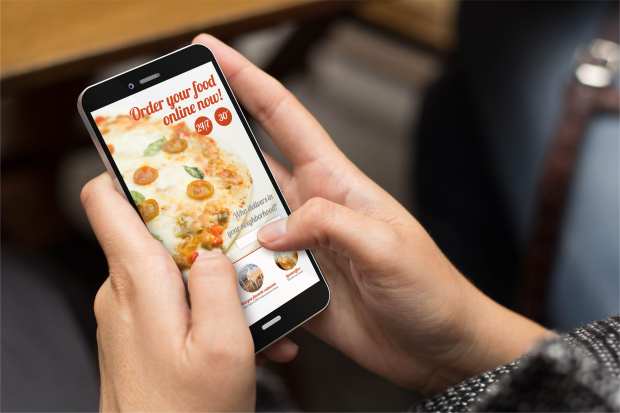Restaurant And Delivery Provider Partnerships Prove Fickle

The competition among mobile ordering apps for share of stomach is fierce and shows no signs of letting up.
According to the latest Mobile Order-Ahead Tracker, the volume of orders placed via mobile apps increased 130 percent between 2016 and 2018, and mobile orders now represent approximately 60 percent of all digital food orders.
Companies like Doordash, Grubhub and Uber Eats are all trying to win over customers, but the core of their business models is very much the same: picking up and delivering food to mobile app users.
Beyond pricing models and fee structures, it is the exclusive restaurant partnerships that can act as differentiators in the increasingly crowded landscape. So it was a big deal this week when McDonald’s announced its new alliance with DoorDash, effectively terminating the relationship the quick-service restaurant (QSR) chain had with Uber Eats since 2017.
McDonald’s will be part of DoorDash’s subscription service, Dash Pass, which grants unlimited free delivery on orders of $12 dollars or more.
“Our leading U.S. market share and best-in-class operations paired with McDonald’s scale makes this an attractive, win-win partnership. We’re thrilled to add McDonald’s to our robust selection of DashPass restaurants to allow customers premier access to their favorite foods without delivery fees,” said Christopher Payne, chief operating officer of DoorDash, in a statement.
McDonald’s and DoorDash have integrated their systems so that DoorDash orders are sent directly to the McDonald’s point-of-sale (POS) system, in an attempt to make the mobile ordering experience more seamless for customers and franchise operators.
Last month, Dunkin’ launched its Dunkin’ Delivers service in partnership with Grubhub and took a similar approach as McDonald’s did with DoorDash by using an POS system that integrates the two brands.
Streamlining the ordering process by integrating POS systems appears to be an increasingly popular approach. In June, Square released new order management integrations for Square for Restaurants, which allows orders from third parties like DoorDash, Postmates and Caviar and funnels them directly into a restaurant’s POS system.
Collaborations and Readiness
Mobile order-ahead developer ItsaCheckmate and ordering app Allset also recently collaborated to allow restaurants that don’t have third-party payment options to integrate them into their daily operations. The ItsaCheckmate’s platform integrates multiple third-party ordering services like DoorDash, Postmates and Uber Eats into a single POS system such as Toast or Clover while Allset works on the public-facing side to enable customers to order and pay for meals via app.
Restaurants are already using mobile devices for table reservations, taking orders, and processing payments through mobile POS (mPOS) systems, but most restaurateurs expect delivery partnership is where future value lies. According to a recent study, 82 percent believe partnerships with third-party delivery services like Uber Eats and GrubHub will help grow their business.
At the same time, however, fewer than half (48 percent) of these restaurant operators reported that they have the tools they need to meet the mobile demands of tomorrow.
This isn’t surprising considering in PYMNTS latest Restaurant Readiness Index, the average restaurant score was 38.7 on a scale of zero to 100. There is also a disconnect between what restaurant managers value compared to customer perception. In this study, 83.6 percent of customers thought online and app ordering was important to future success, while just 64.5 percent of managers thought the same.
In the June 2019 Mobile Order-Ahead Tracker scorecard, restaurants were ranked on an index score compiled on factors like ordering channels, loyalty integrations and app usage.
Starbucks came out on top once again with a score of 96. The app allows users to order drinks and food in advance and pay for them via the app. Customers can also find nearby locations, customize orders and view an estimated time frame for order pickup.
Domino’s Pizza came in at number two with a score of 94, an increase from the previous month’s 83. The app enables customers to order and pay in English and Spanish, and earn rewards for purchasing. Customers can place orders on the go with Apple Watch, Pebble smartwatch or through a connected car. iPhone users can also access a voice-ordering assistant.
Chick-fil-A rounded out the top three with a score of 90. In addition to mobile order-ahead options, last year the QSR started offering MealTime Kits via app-based ordering, counter or drive-thru service.
It is likely that more big fast food chains like McDonald’s might start jumping ship and switching things up with delivery since these high-revenue restaurants are looking for lower commissions and more favorable fee structures.
